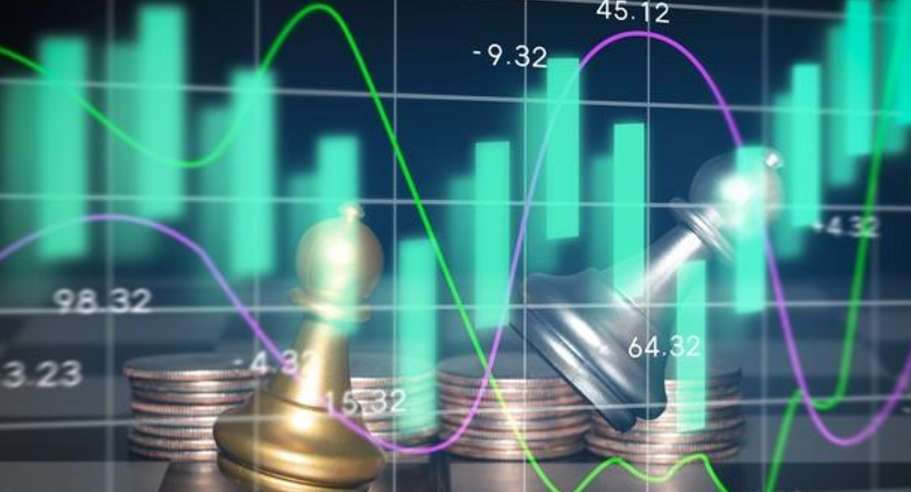The Cost of High Inflation in the U.S.
Advertisements
In an era marked by unpredictable economic fluctuations,the Federal Reserve of the United States is grappling with an inflation landscape that has increasingly become a puzzle.To temper the rising inflation rate,which spiked dramatically,the Fed is compelled to implement aggressive measures,leading to a potential sharp decline in demand and economic downturn.Such drastic policies are deemed necessary to restore price levels to their historical norms in the short term.This precarious balance has resulted in heightened volatility in both inflation trends and asset prices,leaving economists and market analysts uncertain about the future course of the economy.
Recent statistics have painted a troubling picture.In May,the Consumer Price Index (CPI) in the United States surged to 8.6%,surpassing the previous peak of 8.5% recorded in March.This unexpected rise has dashed hopes of peaking inflation,not only for domestic observers but also for international markets that had anticipated a cooling period.
An analysis of the underlying data reveals that the current inflationary pressure in the U.S.is heavily driven by supply-side constraints.
Examining the marginal impact on prices,the May CPI increased by 0.3 percentage points,largely due to energy prices,which accounted for a marginal contribution of 0.34 percentage points.Adjusted for seasonal fluctuations,the CPI saw a 0.7 percentage-point increase.The energy sector notably contributed 0.55 percentage points to this uptick.Interestingly,while the core CPI (excluding volatile food and energy prices) showed a year-on-year rise of 6%,this figure represented a slight dip of 0.2 percentage points from the previous month.
Moreover,there has been a resurgence in pervasive price pressure across various sectors,particularly in food and energy,though core price inflation has not seen a significant uptick just yet.
To understand the inflationary trends in post-pandemic America,one must consider the interplay between excessive demand stimulation and lurking supply shortages.On the demand side,fiscal and monetary policy easing has driven an uptick,while pandemic restrictions resulted in a shift from service-oriented consumption towards goods.This shift has amplified commodity inflation compared to service inflation.On the supply side,shortages arise from disrupted supply chains,geopolitical tensions,and adverse weather conditions.
When we compare the pre-pandemic and post-pandemic landscapes,we see that the demand curve has shifted to the right while the supply curve has shifted upwards.This situation indicates that demand expansion outpaces supply contraction,culminating in higher prices alongside elevated output.The most favorable outcome for the United States would involve easing supply pressures combined with a gradual drop-off in demand,achieving a moderate inflation rate alongside economic growth.
Yet,the Federal Reserve finds itself in a conundrum.Firstly,in the near term,alleviating supply constraints appears improbable.A modest decline in demand may not suffice to bring prices down significantly.Secondly,with consumer inflation expectations on the rise,the Fed cannot simply afford to "wait and see" for a natural remedy to supply issues; it must act forcefully to orchestrate a marked decline in demand,possibly leading to a contraction,in order to temper prices back to reasonable levels in the short run.
In light of this predicament,the Fed’s rapid tightening of monetary policy has resulted in miscalculating demand.The most resilient sector—consumer spending—stands to be disproportionately affected.Rising interest rates,compounded with persistent inflation, exert a significant squeeze on goods demand.Shipping and freight activity,a leading indicator of real goods demand in the U.S.,suggests that consumer appetite for products is indeed waning.Furthermore,the investment landscape,particularly in real estate,demonstrates similar strain.As long-term interest rates rise,mortgage rates on 30-year loans have escalated from a mere 3.1% at the end of 2021 to over 5.1% presently,alongside already elevated real estate prices—this dynamic has contributed to a noticeable decline in property sales and a slowdown in new housing starts since 2022.
exert a significant squeeze on goods demand.Shipping and freight activity,a leading indicator of real goods demand in the U.S.,suggests that consumer appetite for products is indeed waning.Furthermore,the investment landscape,particularly in real estate,demonstrates similar strain.As long-term interest rates rise,mortgage rates on 30-year loans have escalated from a mere 3.1% at the end of 2021 to over 5.1% presently,alongside already elevated real estate prices—this dynamic has contributed to a noticeable decline in property sales and a slowdown in new housing starts since 2022.
Looking forward,the trajectory of U.S.inflation appears even more uncertain,primarily reflected in three key areas:
From a supply perspective,issues related to supply chain disruptions and shortages have not been adequately resolved.The time required to reshape international oil supply and trade dynamics remains clouded with uncertainty.This ongoing turmoil ensures that supply-related disturbances will continue to influence U.S.inflation unpredictably.
On the demand side,it remains difficult to ascertain the extent to which the current inflation scenario reflects the tightening monetary policies of the Fed.The ramifications of mistakenly dampening demand only exacerbate the uncertainty regarding inflation's future trajectory.
Lastly,changes in the allocation of consumer expenditure have distorted inflation comparisons across different time periods.This distortion may lead both the official and market projections to underestimate the severity of the current inflation crisis.
The increasing unpredictability of future inflation implies that both the Fed and market players are more likely to make errors in forecasting.The likelihood of inflation outpacing expectations has notably risen,suggesting that asset prices could experience greater volatility.
Pursuing a balanced approach to growth and inflation through gradual tightening is becoming an increasingly unrealistic endeavor for the Fed.Although the core challenge of inflation lies within supply constraints,the only viable method to suppress prices involves severely curtailing demand—requiring the economy to tangibly feel the impact of decreased demand before inflationary pressures can be meaningfully resolved.
In the coming six months to a year,a significant likelihood exists that demand will face excessive contraction.Our outlook indicates that the primary narrative will pivot from equities to bonds,with U.S.Treasury yields initially reacting to tightening,signaling a potential downturn as demand contraction paves the way for a new lower yield trajectory.